Reserve Bank of Australia Annual Report – 1981 Economic and Financial Developments in 1980/81
1. Overseas Conditions
Against a background of political and economic uncertainty, economic conditions overseas remained troubled throughout the year. Activity was sluggish, unemployment increased and rates of inflation, while declining, remained high in most countries.
Demand management policies were tightened in most industrial countries in 1980. In large part this reflected a response to the substantial increase in the price of oil in the preceding year or so, with its consequent impact on rates of inflation and balance of payments deficits. This approach contrasted with the varied responses of policymakers to the major economic disturbances in the mid 1970s.
Activity and Prices
The pace of economic expansion in the major industrial economies slackened in 1980/81. While the downturn was widespread, its size and timing differed between countries. Following a sharp fall in the second quarter of 1980, real GDP and employment in the United States grew strongly in the next nine months. In Europe, economic activity, which weakened in early and mid 1980, remained depressed. The recession in the United Kingdom remained particularly severe, and unemployment also rose in Germany, France and Italy. Japan recorded stronger growth than most, but at a rate lower than in recent years.
As a result of sluggish activity in the industrial economies, growth in world trade slowed markedly. The decline in oil consumption continued. In part this was a consequence of sharp increases in the price of oil in 1979 and early 1980 but it also reflected a response to the recession and the efforts of many governments to encourage energy conservation and substitution. Prices in the spot market for oil fell in the first half of 1981, responding to high stock levels and lower demand. This followed rises at the end of 1980, which resulted partly from war between Iran and Iraq. Contract prices charged by some OPEC and many non-OPEC oil exporting countries also fell. The rate of increase in prices of other commodities slowed somewhat in 1980/81; the price of gold, in particular, fell sharply.
Consumer prices in the industrial countries increased at a slower rate in 1980/81. Contributing factors to the overall outcome were easier conditions in the world market for oil, depressed economic conditions and the influence of generally tighter policies. Currency depreciations in Europe tended to add to inflationary pressures in that part of the world from around the end of 1980. The fall in inflation during the second half of 1980 was most marked in the United Kingdom. At the same time, the rate of increase in wages accelerated in most countries, following moderate rises in 1979/80. The average increase in real wages, however, was much smaller than that following the economic problems of the mid 1970s.
Policies, Interest Rates and Exchange Rates
Despite generally depressed levels of activity, most industrial countries continued to pursue policies designed to reduce inflation. In the United States, a tight monetary policy was actively pursued and interest rates were very high for most of the year. The fiscal programme of the new Administration, announced in early 1981, included proposals for lower growth in government spending and reduced rates of taxation. In the United Kingdom, the budget and accompanying monetary targets, announced in 1981, again gave priority to reducing inflation. Elsewhere in Europe, various measures were taken to defend currencies placed under pressure by high interest rates in the United States. With a relatively low rate of inflation, Japan was better placed than most countries to introduce some stimulatory measures. Those adopted included easing of credit restrictions, the bringing forward of some budgetary expenditures, and financial assistance to small and medium-sized businesses.
OVERSEAS ECONOMIC INDICATORS

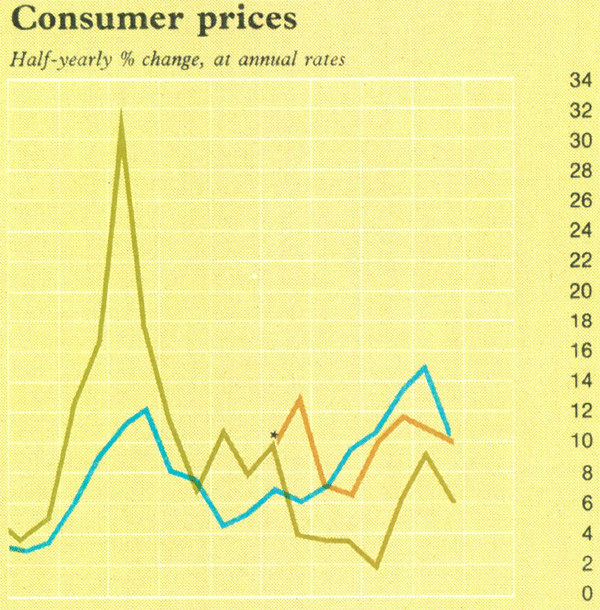
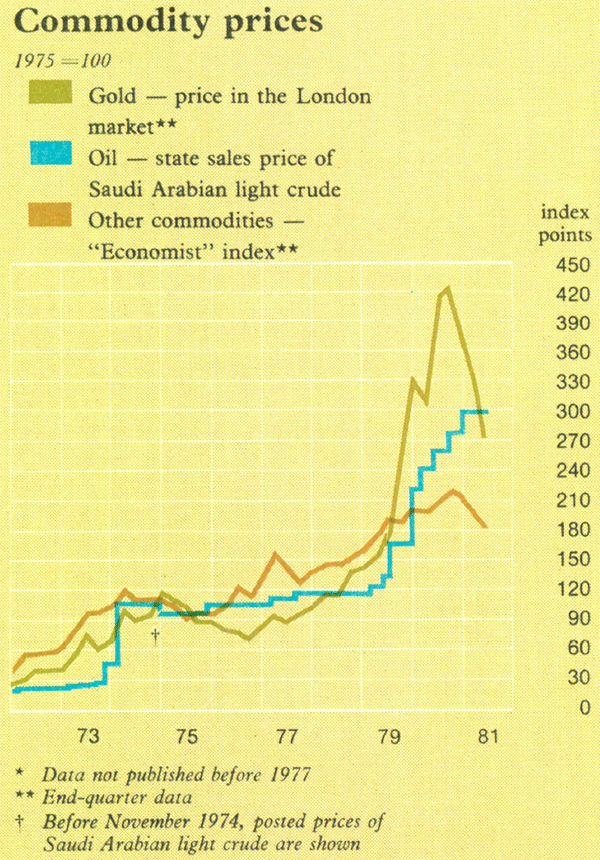
INDICATORS OF OVERSEAS ECONOMIC POLICY
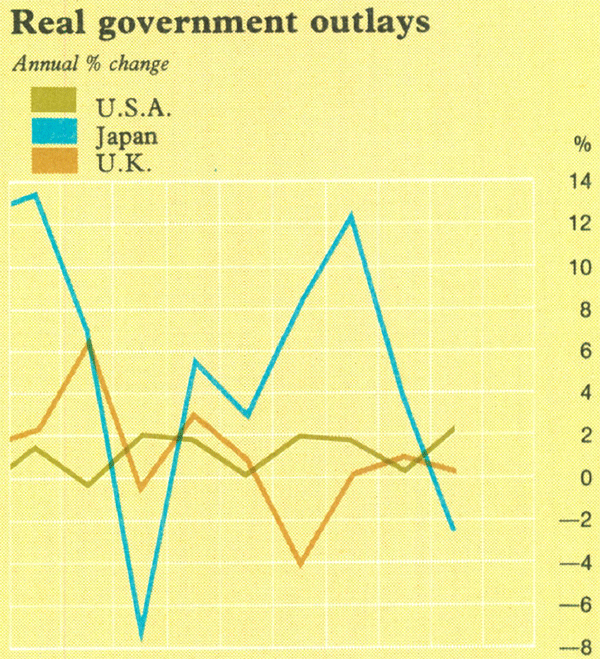
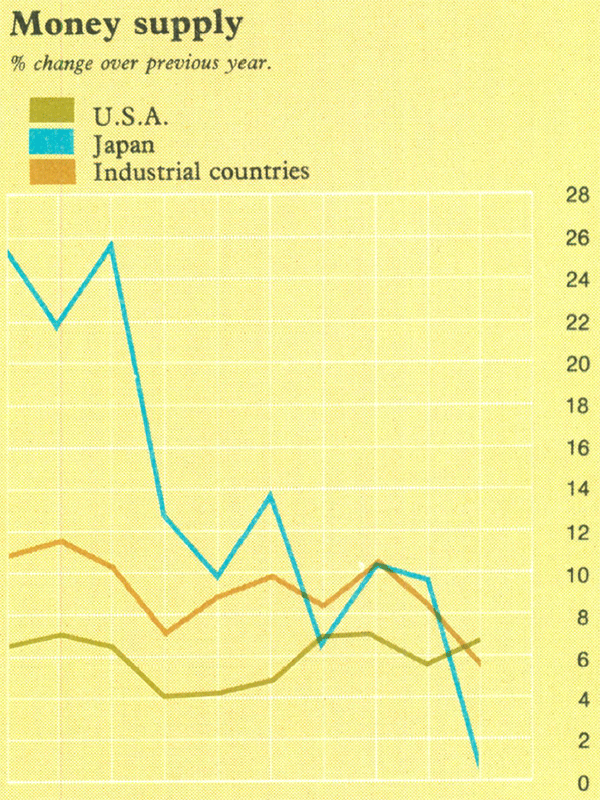
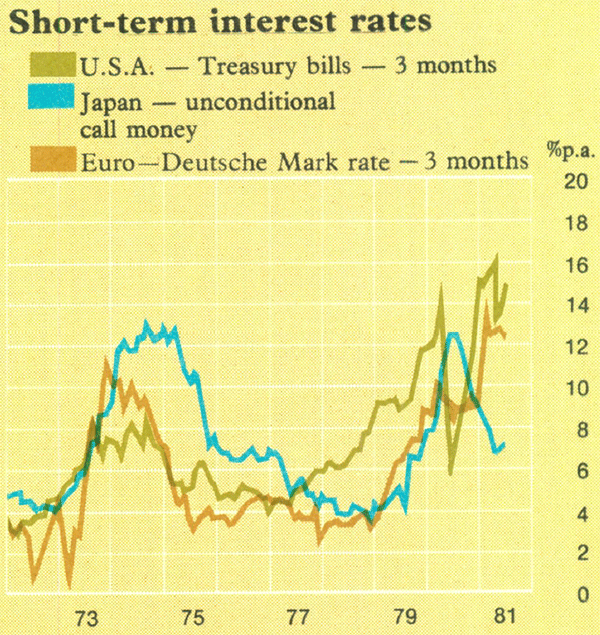
Extreme volatility marked the behaviour of interest rates in the United States throughout the year. In late 1980, they rose to very high levels. Rates eased in early 1981 but subsequently rose again. In much of Europe, interest rates rose sharply in February and March 1981. Exceptions to this general pattern were Japan and the United Kingdom where interest rates fell, although even in these countries there were some increases in market rates towards mid 1981.
Exchange rates were also extremely volatile. The United States dollar was particularly strong for much of the year. The Deutsche Mark, under pressure from a large current account deficit and low interest rates in the second half of 1980, remained weak despite tighter policy in early 1981. Sterling appreciated during 1980; this continued a trend, dating from 1977, related largely to high domestic interest rates and to the United Kingdom's position as a producer of oil. In 1981, with lower oil prices and interest rates, sterling weakened. The yen appreciated steadily against the United States dollar in the second half of 1980, reflecting Japan's lower inflation and strong capital account. This trend was reversed in early 1981.
2. Domestic Conditions
Activity in the Australian economy strengthened further in 1980/81; this continued the trend evident in the previous year. Production, real spending and employment grew strongly. While the rate of increase in prices was much the same as in 1979/80, the rate of increase in earnings accelerated.
A notable feature of the year was the shift from a largely export-led upturn in 1979/80 to a more broadly based domestic expansion. The large increase of over 15 per cent in real private fixed capital formation was the most distinctive feature, although an equally important contribution to the growth in demand came from private consumption.
Production and Spending
Real gross domestic product rose by about 3.5 per cent, a rate well above that for the previous year. The increase consisted of strong growth in non-farm product of around 4.5 per cent, offset partly by a sharp decline in farm output due to widespread drought. Total supplies were expanded by increased imports.
Real domestic final demand was buoyant. Increased spending on investment, while broadly based, owed much to activity in the resources sector where new and expanded opportunities attracted domestic and foreign capital. Higher real incomes and a lower saving ratio boosted consumption. Improved economic growth in recent years and the general mood of confidence also contributed. A decline in exports, following rapid growth in 1979/80, partly offset domestic demand.
COMPONENTS OF TOTAL SUPPLIES
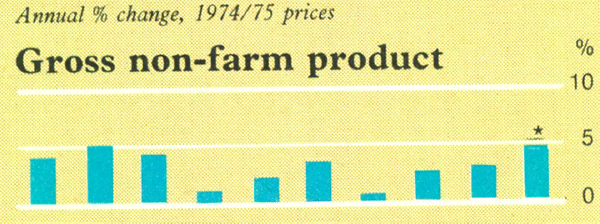
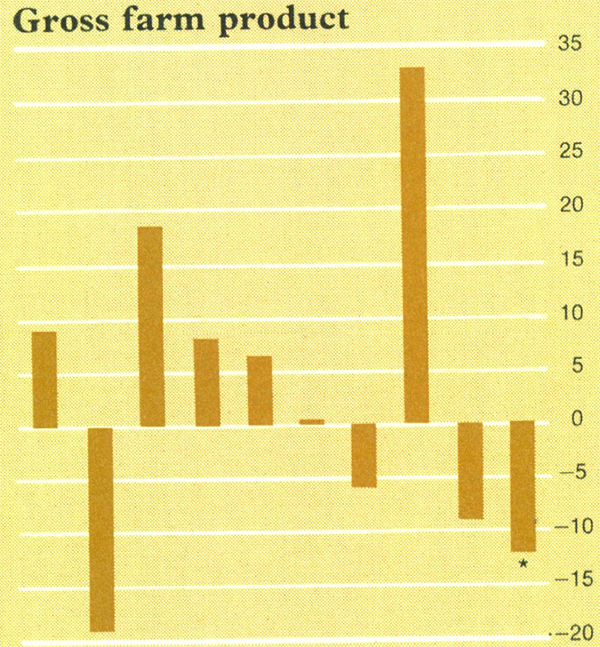
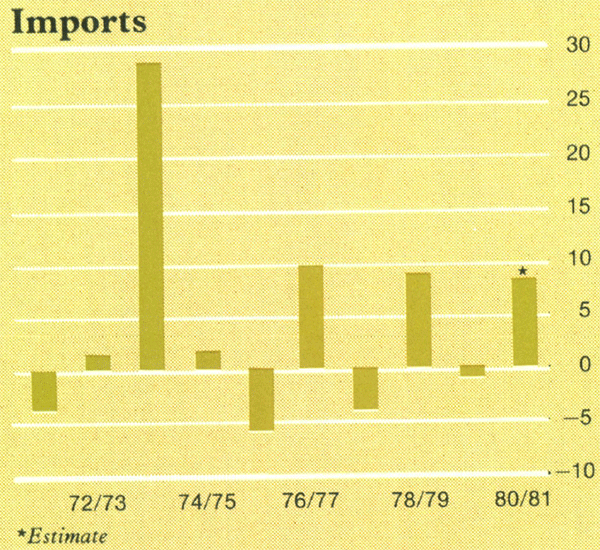
COMPONENTS OF FINAL DEMAND
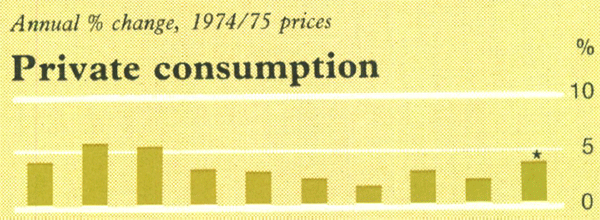
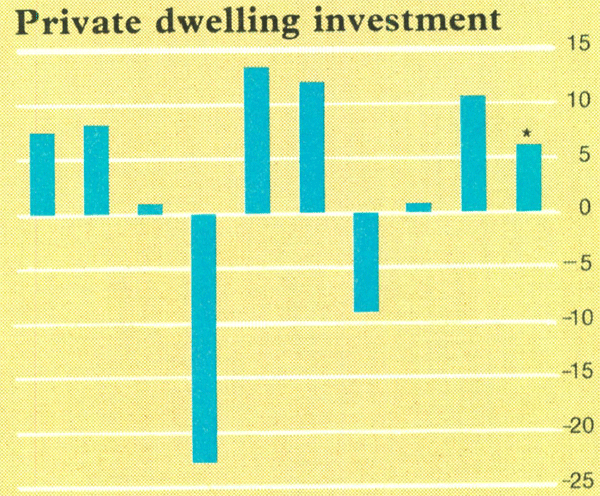
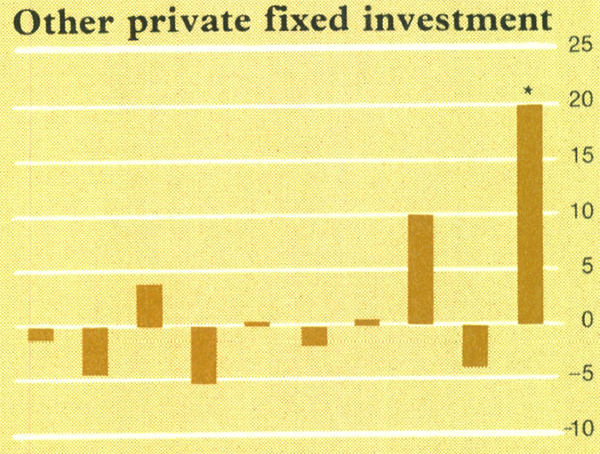
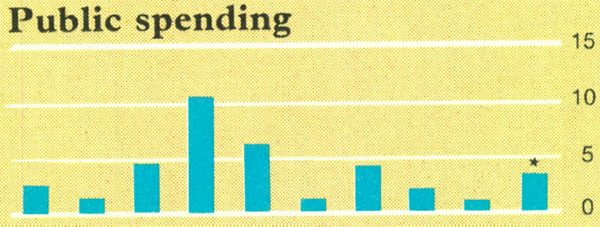
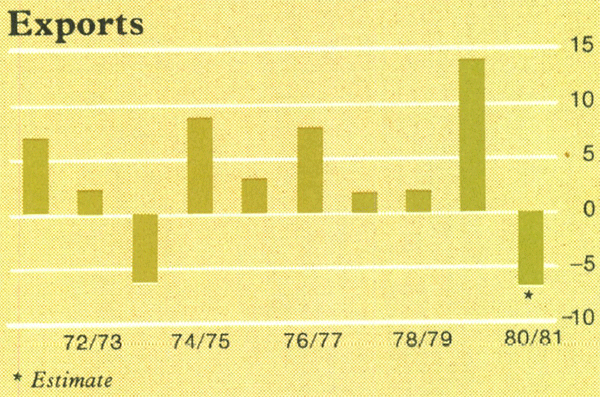
Total government spending for the year grew by around 4.0 per cent in real terms, compared with an average rate of 1.4 per cent per annum over the preceding two years. This growth was mainly in current expenditures, including a strong rise in spending on defence. Following declines in the previous two years, real outlays on capital by the public sector showed little change.
Prices, Wages and Incomes
Inflation remained high in 1980/81. The consumer price index increased by 9.4 per cent, 0.8 of a percentage point lower than in 1979/80. A broader measure of prices, the implicit deflator for gross national expenditure, increased at a rate higher than the consumer price index but also a little lower than in 1979/80.
Of the components of the consumer price index, food prices increased by 10.4 per cent, petrol prices increased by 16.2 per cent, and other items rose by 8.7 per cent. Pressure on food prices was eased partly by lower prices for beef, due to depressed demand overseas and a high level of slaughterings as a result of the drought. Softness in world commodity prices and appreciation of the Australian dollar acted to moderate inflationary pressures.
Average weekly earnings increased by about 13.5 per cent, substantially more than the increase of around 10 per cent in the previous year. This outcome reflected increases in award wages, due mainly to indexation and work value cases, and strong domestic demand. With prices rising by less than 10 per cent, the figures suggest an increase in real wages in the year.
The previous system of six-monthly wage indexation was abandoned by the Arbitration Commission in January. A new set of principles was introduced in April, based on six-monthly national wage reviews, alternating between semi-automatic indexation and a review of wages taking account of movements in prices, average productivity and general economic conditions. This system was subsequently abandoned in July.
Following strong growth in 1979/80, the gross operating surplus of companies grew at around the same rate in 1980/81. There was a further rise in the proportion of national income accruing to companies.
Labour Market
After growing at an average rate of 2.3 per cent in 1979/80, employment increased by about 2.7 per cent in 1980/81. This outcome reflected continued strength in real demand. The reduced imbalance in recent years between real labour costs and labour productivity also helped.
Growth in the labour force, partly reflecting further rises in the participation rate, largely matched the rise in employment, so that the fall in the rate of unemployment was relatively small; the reduction in the later part of the year was more pronounced. The average unemployment rate for the year was around 5.8 per cent, compared with 6.1 per cent in 1979/80. While the decrease in the unemployment rate was the biggest in a single year since unemployment rose steeply in 1974/75, the high level continued to be of concern.
The Balance of Payments
A marked increase in the inflow of private capital was one of the main features of the balance of payments in 1980/81. This was not fully offset by a larger deficit on current account. Overall, there was a balance of payments surplus of $1,142 million, compared with a deficit of $301 million in 1979/80. With the appreciation of the Australian dollar more than offsetting the influence of high inflation in the rest of the world relative to Australia, the overall competitiveness of many Australian products decreased.
PRICES, WAGES AND THE LABOUR MARKET
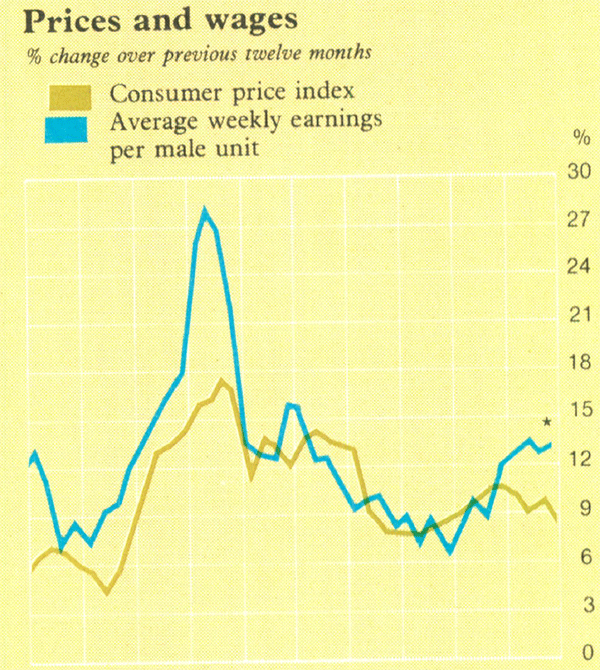
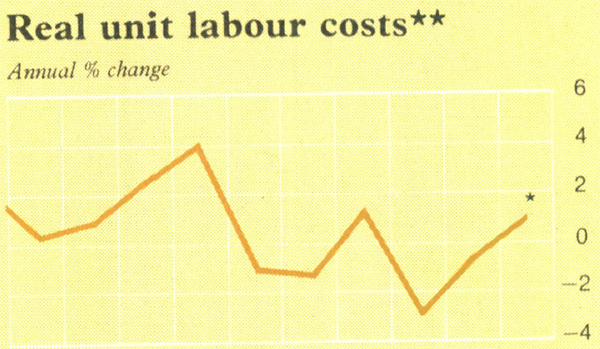
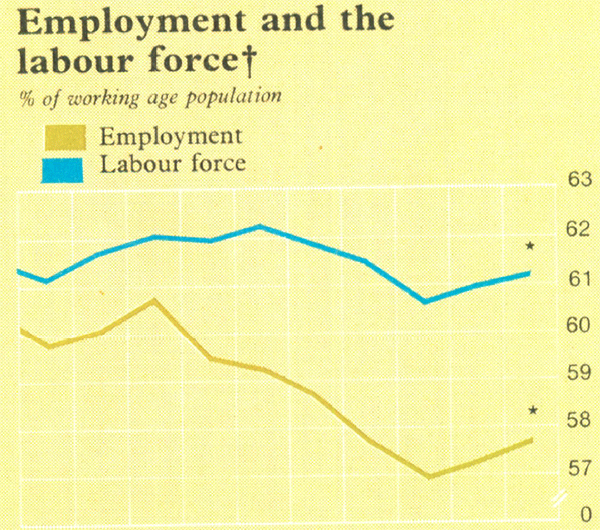
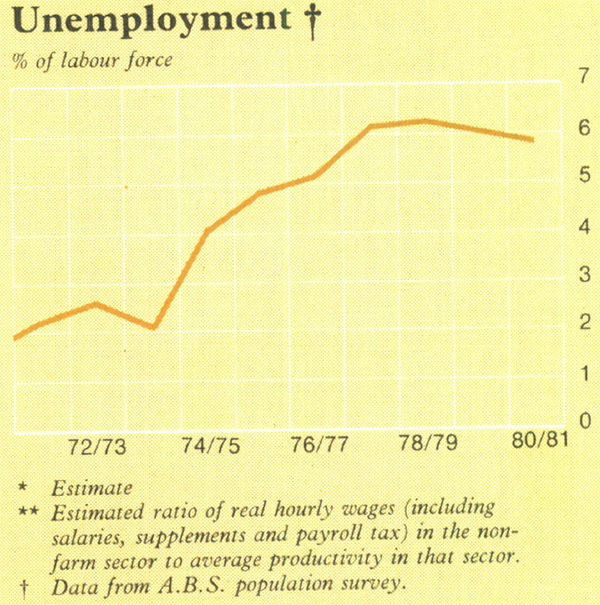
During the year, private capital inflow, excluding that on account of marketing authorities, totalled $5,814 million, $4,101 million more than in 1979/80. Included in the figure for private capital inflow was $349 million borrowed overseas by public non-monetary enterprises, a large part of which reflected borrowing by State instrumentalities for infrastructure projects.
The large increase in private capital inflow appears to have been due to a number of factors, including strong demand for finance in Australia and favourable investment opportunities. In part, these and other factors reflected a continuation of the trend, established in recent years, towards conditions favourable to long-term investment in Australia.
The trade account showed a small deficit, reflecting little growth in the value of exports, and a strong rise in imports; this followed a large surplus in 1979/80. The quantity of exports fell compared with the previous year, and the growth in export prices slackened; these developments were due largely to the recession in major economies overseas and to the drought in Australia. Growth in imports reflected three main factors: strong demand for imported capital goods associated with the development of Australian resources, increased spending on consumption, and a fall in the price of imports relative to the price of domestically produced goods. With a further increase in net payments for invisible items, the overall current account deficit was about three times as large as in 1979/80.
Official monetary sector transactions reduced official reserve assets by a net $41 million in 1980/81. Contributions to this outcome included Compensatory Financing Facility repurchases from the International Monetary Fund in December and June (approximately $130 million in total) and net repayments to the Bank for International Settlements, equivalent to $43 million. Reserves were boosted in January by an allocation of Special Drawing Rights in the International Monetary Fund equivalent to $87 million, and in June 1981, the Commonwealth raised the equivalent of $78 million through a public bond issue on the Tokyo capital market.
A 50 per cent increase in Australia's quota, to SDR 1,185 million, in the International Monetary Fund in December had no effect on reserves; the use of Special Drawing Rights in part of the subscription payment was offset by an increase in Australia's reserve position in the Fund.
The value of official reserve assets rose by $28 million to $5,709 million during the year; the contribution from the surplus on the balance of payments was largely offset by a fall of $933 million in the value of official holdings of gold.
3. Finance
Activity and prices in financial markets responded to a number of influences in 1980/81, including strong competition for funds domestically and high and volatile interest rates abroad. Overall, financial conditions were marked by continued rapid growth in monetary aggregates and very high interest rates.
AUSTRALIA'S BALANCE OF PAYMENTS
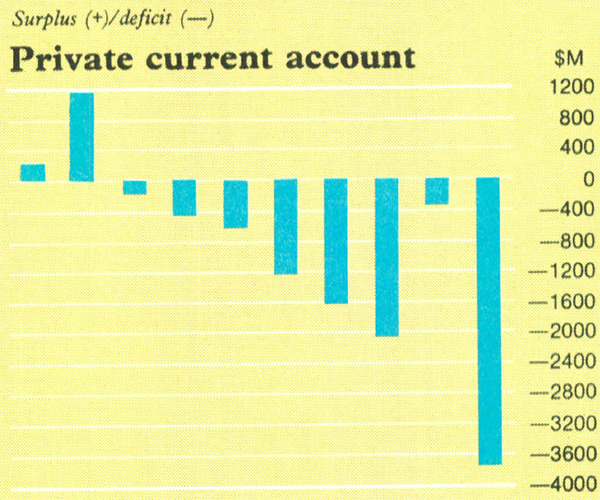
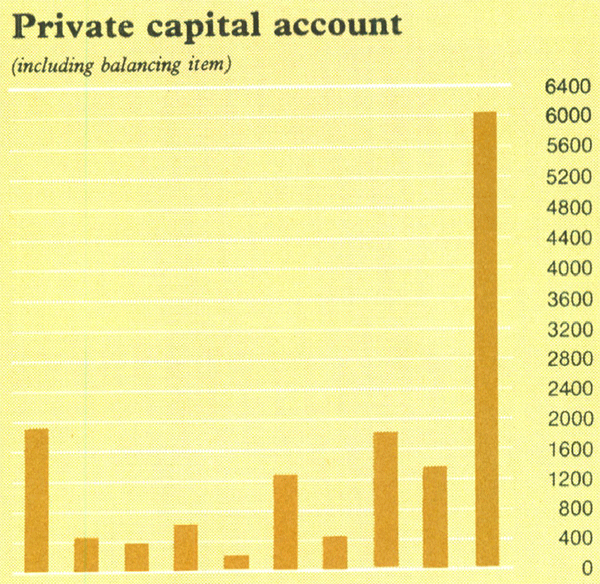
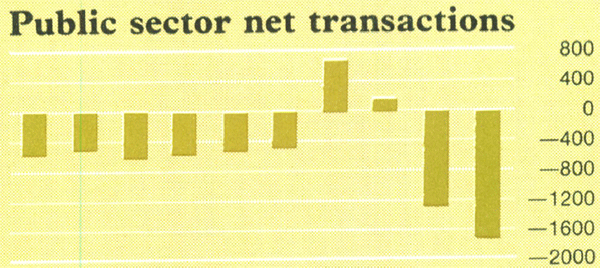
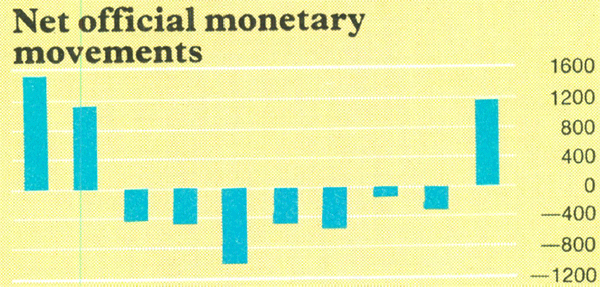
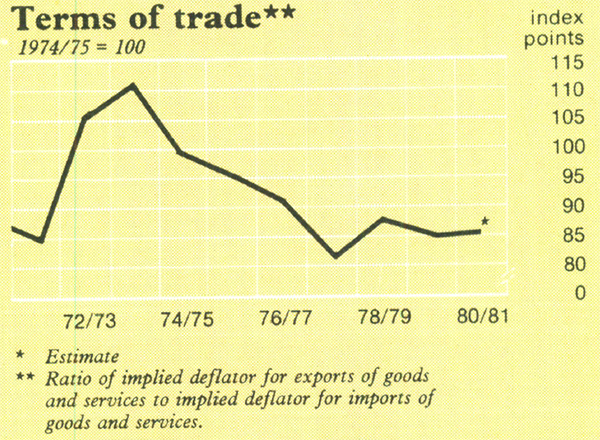
Monetary Aggregates and Liquidity
According to most measures, monetary growth was quicker than in recent years. As measured by M3, the stock of money rose by 12.7 per cent, compared with a rise of 12.3 per cent in 1979/80 and 11.8 per cent in 1978/79. Growth in broader aggregates also accelerated; for example, M3 plus borrowings from the public by non-bank financial intermediaries increased by around 16 per cent, following growth of 13.4 per cent in 1979/80 and 14.6 per cent in 1978/79. Growth in M1 and M2 slowed a little. This may have reflected some substitution of funds away from non-interest bearing current accounts following the deregulation of interest rate ceilings on other bank deposits in December 1980. Growth rates for a range of monetary aggregates are given in the Table below.
| per cent | |||||
|---|---|---|---|---|---|
| 1976/77 | 1977/78 | 1978/79 | 1979/80 | 1980/81 | |
| Currency in circulation plus current accounts with trading banks (M1) | 8.4 | 8.6 | 16.7 | 12.9 | 12.2 |
| M1 plus other deposits with all trading banks (M2) | 11.4 | 6.1 | 13.3 | 16.5 | 15.2 |
| M2 plus deposits with all savings banks (M3) | 11.0 | 8.0 | 11.8 | 12.3 | 12.7 |
| M3 plus borrowings by non-bank financial intermediaries** | n.a. | 11.6 | 14.6 | 13.4 | 15.8† |
|
* These measures are defined net of identifiable flows among the institutions involved. **Non-bank financial intermediaries are as defined in the Financial Corporations Act of 1974. † Estimated. |
|||||
A breakdown of the sources of change in M3 is given in the Table on page 25. A major contribution to growth in M3 came from the surplus on private external transactions. The other notable feature from this Table is the smaller contribution of the Commonwealth's domestic budget deficit to the change in M3. This continued the downward trend evident in recent years.
Private holdings of liquid assets and government securities (private LGS) rose sharply in 1980/81. Of the increase, $557 million was in the form of private non-bank holdings of government securities; this was about $180 million less than in 1979/80. Holdings of LGS by banks increased by $1,299 million, after showing little change in the previous year. Compared with recent years, savings banks raised their holdings of LGS more strongly.
There were marked movements in holdings of LGS within the year. After rising by $2,784 million in the first six months of the year and a further $1,046 million in the next three months, they fell sharply, by $1,419 million, in the June quarter. The main influence on fluctuations within the year was again the pattern of the Commonwealth Government's transactions. The expansion in liquidity in the first half of the year was increased by a surplus in private external transactions which, in recent years, have recorded a deficit in this period.
| $ million | |||||
|---|---|---|---|---|---|
| 1976/77 | 1977/78 | 1978/79 | 1979/80 | 1980/81 | |
| Budget domestic deficit | 1,864 | 2,361 | 2,258 | 567 | −428 |
| Private external transactions | 19 | −1,202 | −254 | 974 | 2,839 |
| Rural credits advances | 378 | −106 | 78 | −285 | 114 |
| Other factors addings to LGS | −819 | 630 | −351 | −88 | −115 |
| Private LGS | 1,442 | 1,683 | 1,731 | 1,168 | 2,410 |
| Less non-bank holdings of: | |||||
| Notes and coins | 361 | 384 | 421 | 457 | 557 |
| Commonwealth government securities | 1,091 | 1,244 | 719 | 741 | 557 |
| Other** | −5 | −7 | 1 | 5 | −2 |
| Banking LGS | −5 | 62 | 590 | −35 | 1,299 |
| Bank loans and advances† | 3,295 | 3,425 | 3,726 | 4,440 | 4,463 |
| Other assets and liabilities of banks | 391 | −1,173 | −84 | 466 | −132 |
| Bank Deposits | 3,681 | 2,314 | 4,232 | 4,871 | 5,630 |
| Less Government and inter-bank deposits | 448 | −190 | 27 | −47 | −67 |
| Add back Notes and coins | 361 | 384 | 421 | 457 | 557 |
| Add back Private deposits with the Reserve Bank | −1 | −1 | — | 6 | −2 |
| Change in Volume of Money (M3) | 3,593 | 2,887 | 4,626 | 5,381 | 6,252 |
|
* Savings bank figures are interpolated. **LGS of development banks and private deposits with the Reserve Bank. † Includes savings bank purchases of local and semi-government securities. |
|||||
The pattern of growth in the monetary aggregates within the year also showed considerable variability.
In the first six months of the year there was a noticeable switching of asset holdings towards shorter maturities. This appears to have been related to a number of factors, including the rapid inflow of funds from abroad and expectations about possible further rises in interest rates. There was a rapid rise in M1 during this period. M3 also grew strongly, with savings bank deposits less sluggish than in recent years; rapid growth in investment accounts contributed the greater part of growth in total savings bank deposits. Following interest rate adjustments in December, funds moved from current accounts and certificates of deposit with trading banks into fixed interest accounts. M3 continued to grow, although less quickly. M1 fell initially, but subsequently increased.
Broader aggregates also grew faster in the first six months than in the second. Part of the movement in activity in the non-bank financial sector was related to the rapid expansion in financing through commercial bills and promissory notes in the first six months.
Interest Rates on Private Securities
Strong demand for funds domestically by the corporate and government sectors and high rates of interest overseas exerted strong upward pressure on domestic interest rates throughout the year. Both private and public sector rates rose substantially (movements in the latter were described in the preceding chapter). At the same time, there was a general shortening of the average maturity of portfolios.
The buying rate for 90-day commercial bills accepted or endorsed by banks rose from 13.85 per cent in June 1980 to 16 per cent in June 1981. Rates on 180-day bank bills and on certificates of deposit (3 to 6-months) showed similar increases. Rates began to rise quickly around the end of 1980, following earlier falls in response to the seasonal easing of liquidity. In anticipation of the seasonal run-down in liquidity and with further rises in interest rates overseas, rates on bank bills jumped sharply in late March, and peaked at around 17 per cent in early May. Some subsequent easing was reversed towards the end of June.
Maximum rates of interest offered on one-year and two-year debentures by finance companies affiliated with major trading banks rose by around 3 percentage points over the year; maximum rates on five-year debentures rose by 2.75 percentage points.
In December, interest rate ceilings on bank advances were raised generally by 2 percentage points (for details, see the Calendar of Official Actions). Immediately following the increase, and in consultation with the Reserve Bank, banks raised rates on small overdrafts and housing loans by 1 percentage point, and on personal instalment loans by 0.5 of a percentage point (flat). Further selective increases in rates on small bank advances, other than for housing, occurred in the second half of the financial year, although the rates charged were still within the ceilings. Rates on larger overdrafts were increased by 1.5 percentage points during this period to 15 per cent at the end of the year; this compared with 12.5 per cent at the end of 1979/80.
Along with the rise in lending ceilings, the remaining ceilings on interest rates paid by trading and savings banks on deposits were removed. Prior to this action, the maximum rate that banks were able to offer on fixed deposits was 10 per cent, while the maximum rate payable on deposits with savings banks was 9 per cent. Following the removal of controls, trading banks generally lifted rates on small fixed deposits (less than $50,000) by about 1.5 percentage points to a range of 10 to 11.75 per cent at end February. By end June, the range was 10.5 to 12.25 per cent. Rates offered by most savings banks on investment accounts rose by 1 percentage point to 10 per cent following the removal of controls; by end June, banks were generally offering 10.5 per cent.
FINANCIAL GROUPS: INTEREST RATES
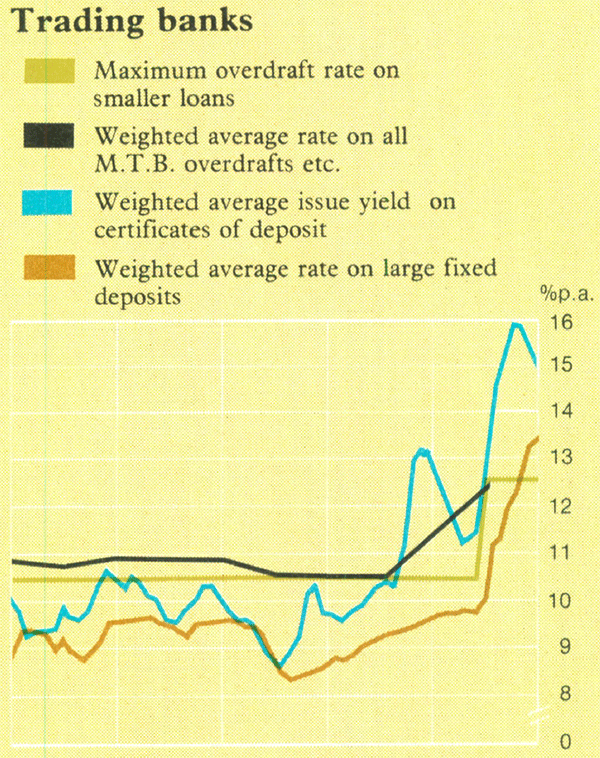
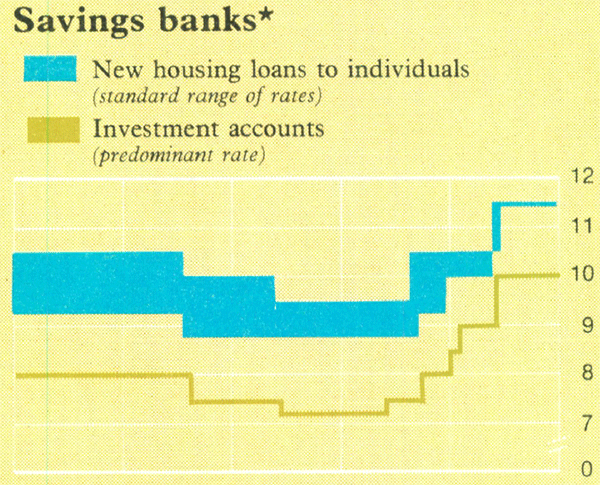
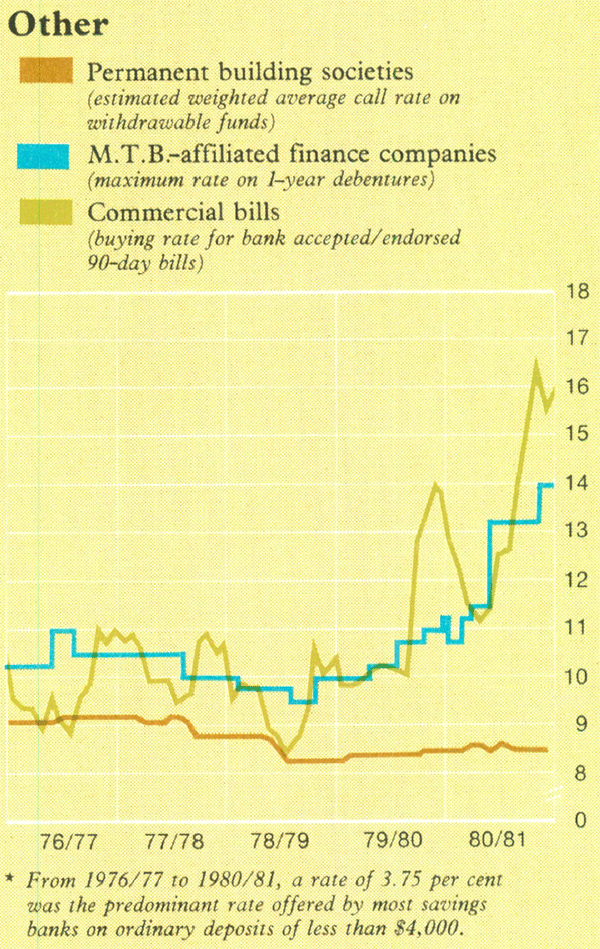
The rates offered on certificates of deposit rose by around 3.5 percentage points between end December and end April; they later fell a little and averaged around 15 per cent at end June, compared with 13.23 per cent a year earlier.
Permanent building societies in most States did not increase their interest rates on call deposits, but did increase the rates on term deposits broadly in line with increases in bank rates.
Financial Intermediation
Growth in total intermediation was again strong in 1980/81. Over the year, total trading bank deposits rose by 14.3 per cent, following a rise of 15.6 per cent in 1979/80. Savings bank deposits grew more rapidly in 1980/81 than in the previous year, with a rise of 9.3 per cent.
Withdrawable funds of permanent building societies increased by around 10 per cent, well below the 20 per cent rise in 1979/80. Borrowings from the public by finance companies rose by about 20 per cent, while domestic borrowings by money market corporations rose by around 30 per cent, following increases of 11 per cent and 28 per cent respectively in 1979/80. Total liabilities to clients of authorised dealers in the short-term money market fell by 7.4 per cent after growth of 1.3 per cent in 1979/80.
Loans, advances and bills discounted by the major trading banks rose by 12.6 per cent in 1980/81. With the general level of liquidity high in the first half of the year, overdraft advances of the major trading banks declined. This was offset by expansion in bills discounted and other forms of lending. In the second half of the year, overdraft limits were drawn more fully with the normal seasonal tightening of liquidity. Bankcard outstandings and personal instalment loans both grew at rates above the high rates of the previous year.
For the second consecutive year, there was rapid growth in banks' commercial bill limits in 1980/81. Discount limits grew by about 70 per cent to $4,778 million, and acceptance/endorsement limits grew by almost 32 per cent to $6,001 million. The Australian Wheat Board again relied heavily on private sources to finance the marketing of the wheat crop harvested in 1980/81. A syndicate of two private trading banks and nine authorised dealers provided the Wheat Board with a facility of $1,100 million through a mix of bank accepted bills and promissory notes during the year; raisings by the Board from private financial markets were $900 million in 1979/80.
Loans, advances and bills discounted by savings banks increased by 12.5 per cent over the year, slightly higher than in 1979/80. Loans for housing grew by 10.2 per cent, somewhat less than in the previous year. Other advances and bills discounted of savings banks increased sharply in 1980/81, after little change in the previous year. Growth in savings bank holdings of local and semi-government securities (6.3 per cent) was again lower than in the preceding year.
Loans outstanding of permanent building societies increased by around 15 per cent in 1980/81; new advances were buoyant in the first half of the year but eased in the second half. Loans outstanding by finance companies rose by around 20 per cent, compared with 11.5 per cent in the previous year. Loans outstanding of money market corporations again increased strongly; over the year they rose by about 36 per cent, compared with a rise of 25 per cent in 1979/80.
SELECTED FINANCIAL ASSETS AND LIABILITIES
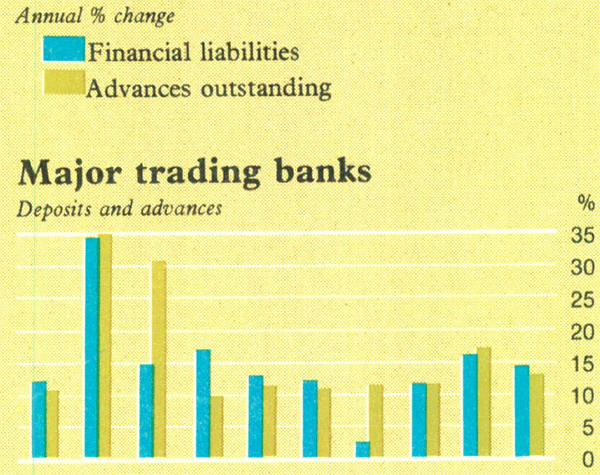
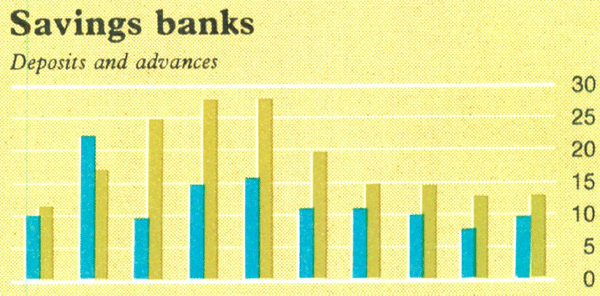
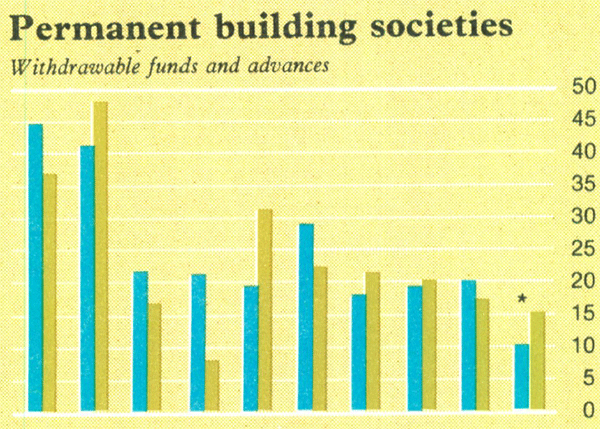
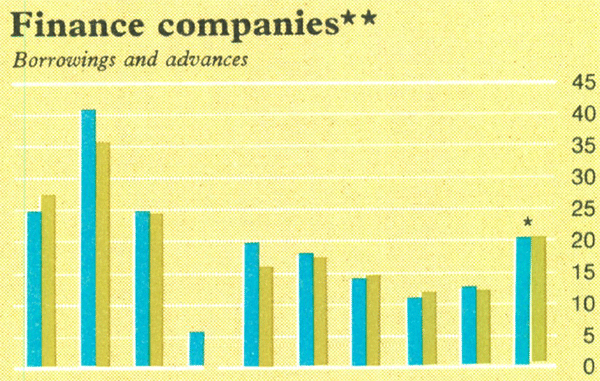
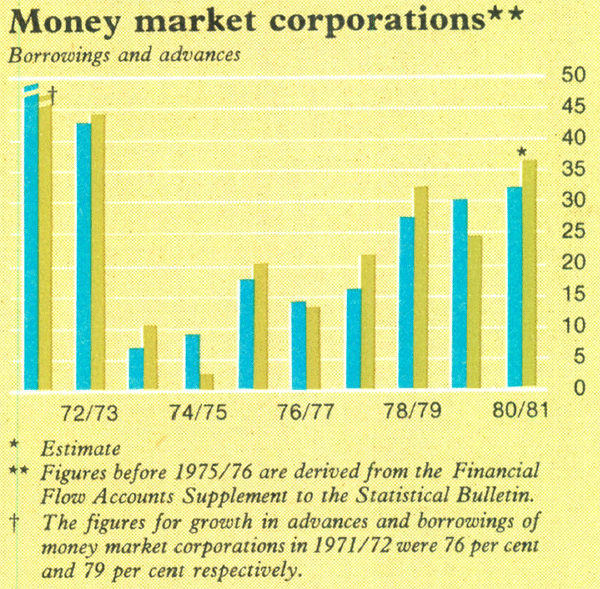
Government Financing
The deficit of the Commonwealth Government was $1,128 million in 1980/81. This compared with the Budget estimate of $1,566 million and an outcome in the previous year of $2,034 million.
As detailed earlier, there was a further reduction in overseas borrowing by the Commonwealth Government in the year. The components of domestic financing were: net sales of Commonwealth Government securities, $2,045 million; redemption of Treasury bills from the Reserve Bank and accumulation of cash balances, $842 million; and other financing transactions, $23 million. Of the $2,045 million net sales of securities, $1,912 million was accounted for by Treasury notes and $458 million by Treasury bonds and other public loans; there were net redemptions of $326 million in respect of Savings Bonds and Special Bonds. In the previous year, there had been net redemptions of $77 million of Treasury bonds, while Australian Savings Bonds and Special Bonds had contributed $174 million.
The deficit of the total public sector in 1980/81 was around $4,600 million, compared with a deficit of around $5,000 million in 1979/80. In addition to the Commonwealth Government's financing transactions noted above, the public sector deficit was financed by increased borrowings under the Loan Council programmes and some reductions in cash balances. Including financing of infrastructure, the larger semi-government and local authorities borrowed about $2,250 million in 1980/81, around 12 per cent more than in 1979/80. The smaller authorities borrowed about $530 million, up 12 per cent on 1979/80.
The Share Market
The share market was buoyant during most of 1980/81, continuing the strong trend established in 1979/80. Share prices climbed quickly in the second half of 1980, with the Australian “all ordinaries” index reaching a peak of 746 in November. Prices declined in January and February, recovered somewhat, and then slumped again to close the year with the index at 700, up 11.3 per cent on the figure a year earlier.
With share prices generally buoyant, the volume of equity issues was also large. Issues of fixed interest securities by industrial companies were few, and for the most part, not well supported. The corporate sector was, however, active in raising funds through the issue of convertible unsecured notes and promissory notes.
Institutional Developments
Last year's Report mentioned the proposed establishment of a new trading bank by Australian interests. In October 1980, a company was incorporated with the name Australian Bank Limited. Having met the broad criteria and requirements earlier indicated by the Government, the company was granted, in February 1981, unconditional authority to carry on banking business in Australia. Australian Bank Limited is the first new private trading bank to be formed in Australia since the Banking Act was enacted in 1945.
On 15 June, the Treasurer gave his consent under Section 63 of the Banking Act 1959, to two bank mergers. One proposal involved the Bank of New South Wales and The Commercial Bank of Australia Limited. The other involved The National Bank of Australasia Limited and The Commercial Banking Company of Sydney Limited. The decision reflected the Treasurer's view that significant national interest considerations would need to be present to warrant the Government interfering in the commercial decisions of the banks which had led to the merger proposals.
GOVERNMENT FINANCE
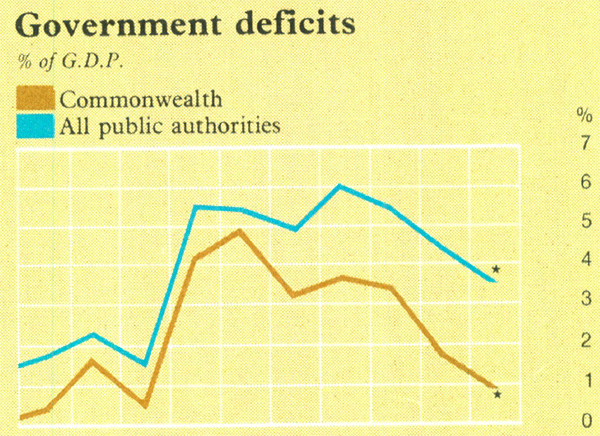
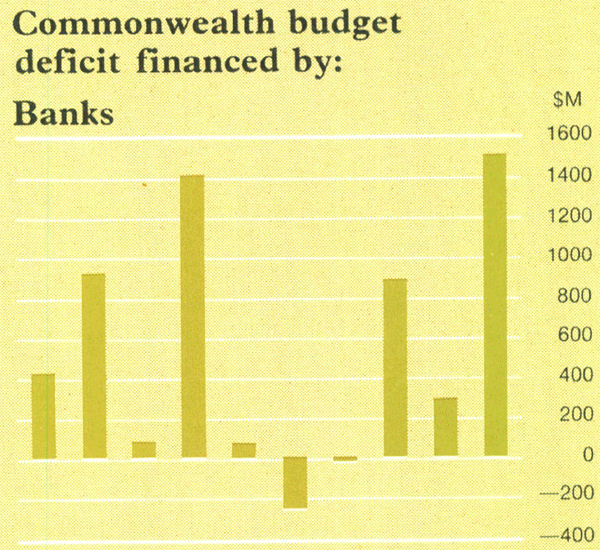
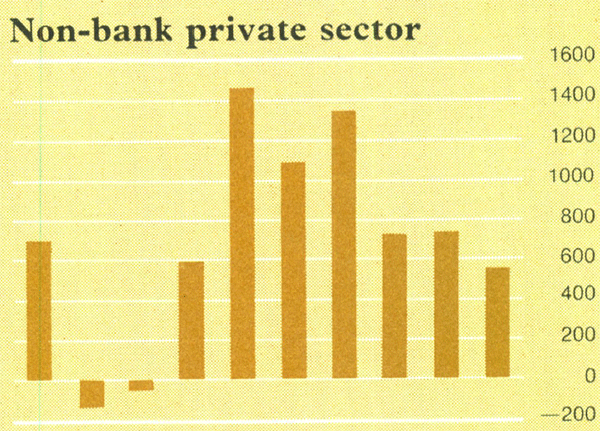
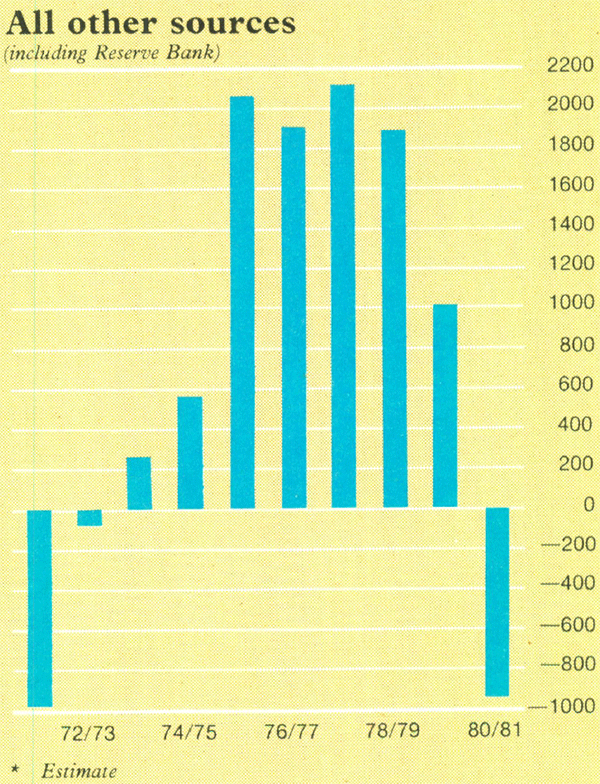
The interim report of the Committee of Inquiry into the Australian Financial System was tabled in Federal Parliament in August 1980; the Committee was established in January 1979. The interim report outlined the present structure of financial markets in Australia, their methods of operation and current regulations and controls imposed on the financial system. This report was to form the basis for further discussion and comment within the community on matters which are the subject of the Inquiry. The interim report made no recommendations about the financial system; these will be made in the Committee's final report which is expected to be available during the second half of 1981.